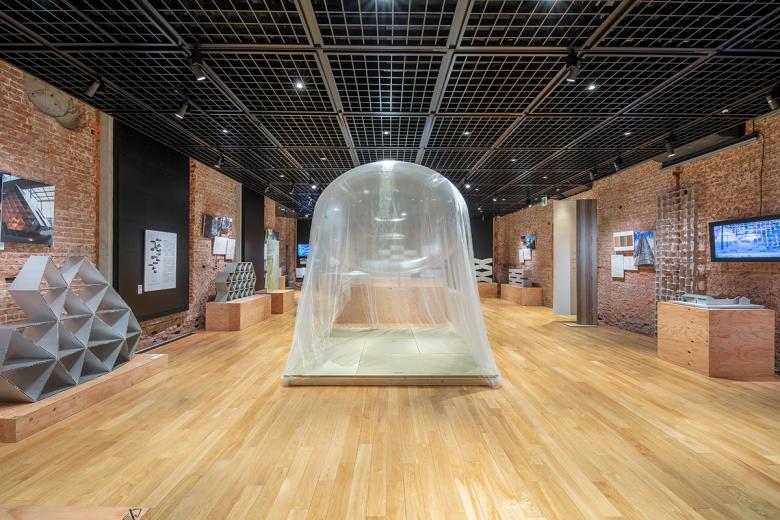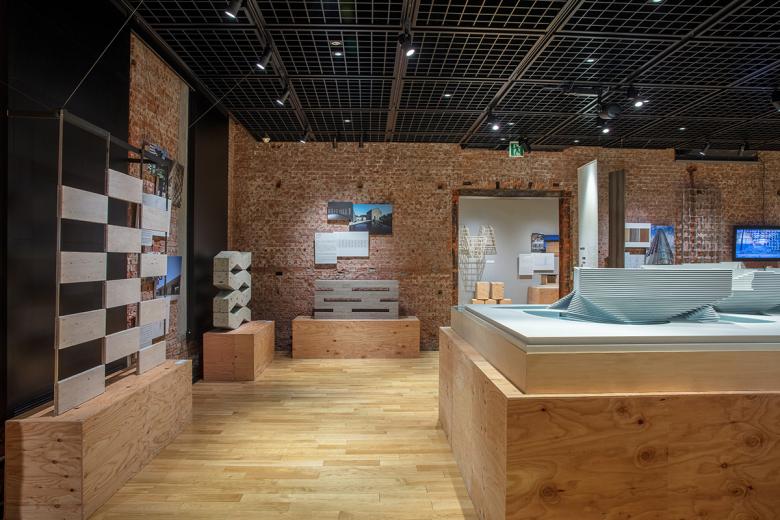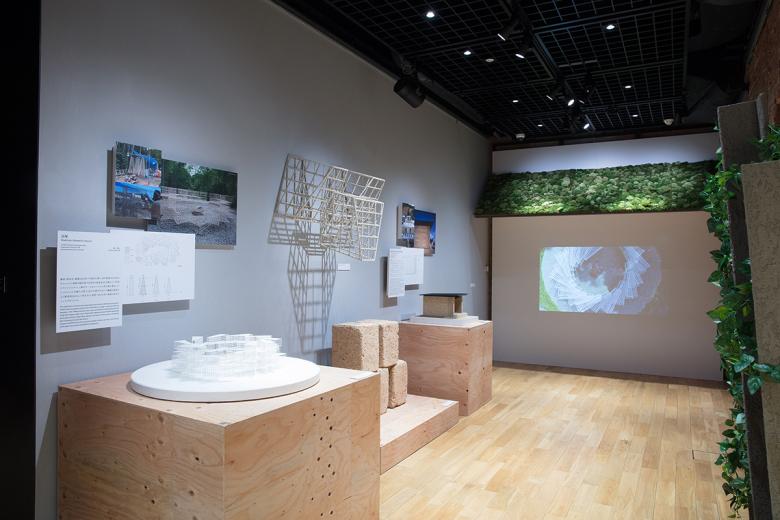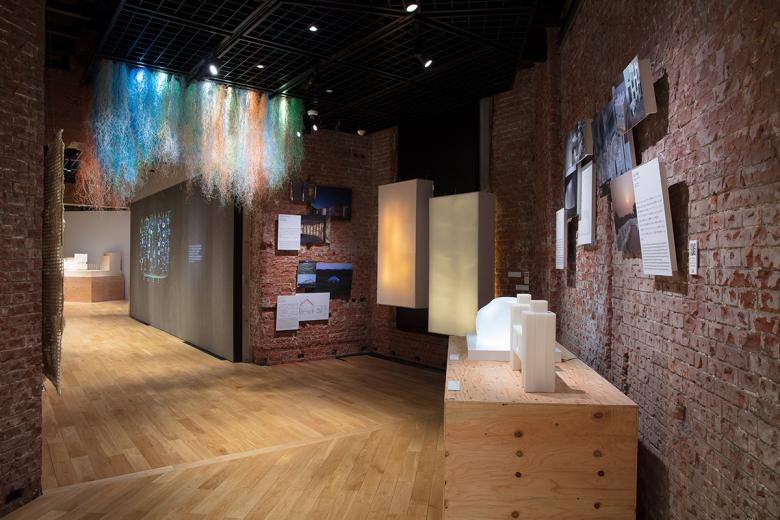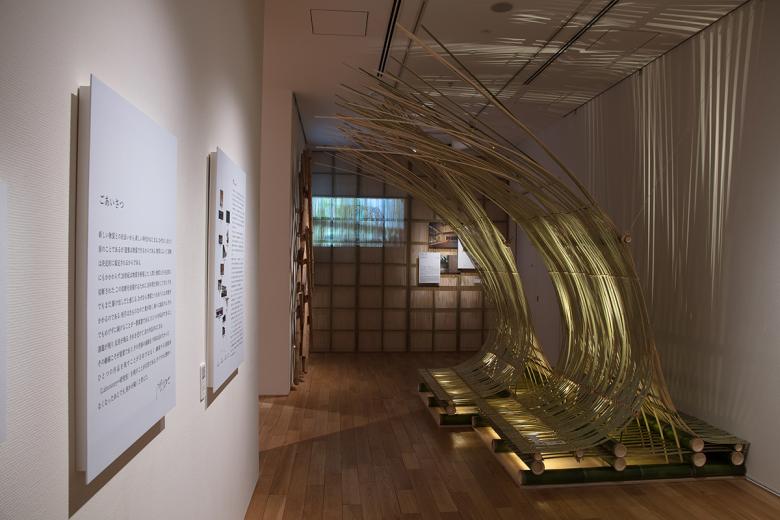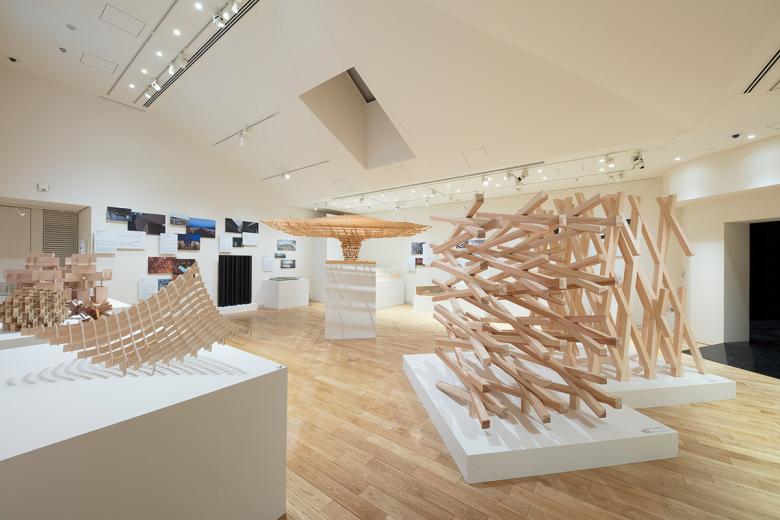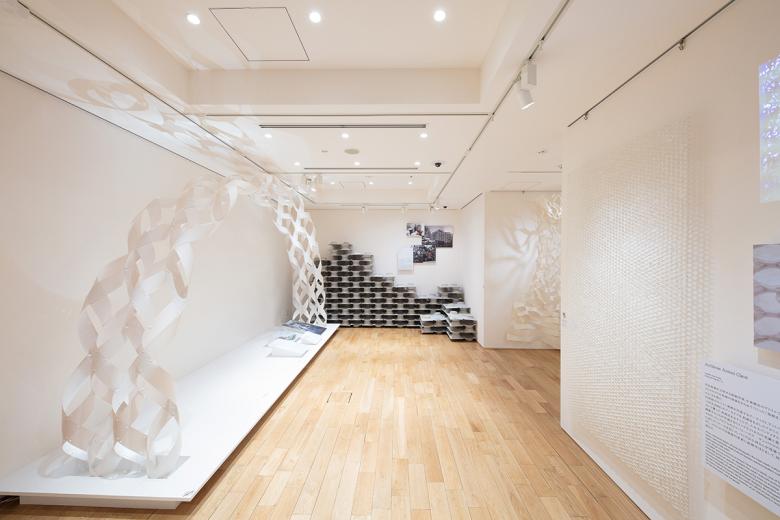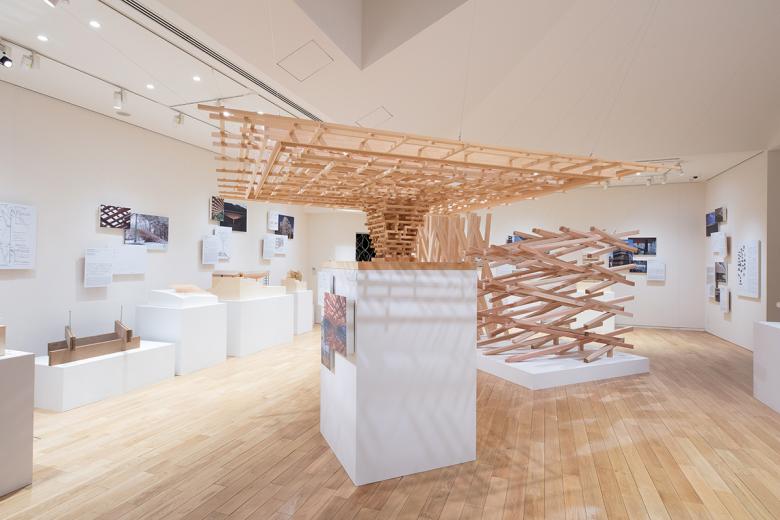Losing Architecture
The exhibition Kengo Kuma: a LAB for materials in Tokyo reveals the goals and failures of contemporary Japanese avant-garde architecture.
In Japan, buildings do not last. The average life expectancy of a building is short of 30 years. Each generation continually rebuilds even the most giant cities anew. While this seems wasteful by European sustainability and durability standards, it frees contemporary Japanese architecture from the notion of creating "ever-lasting' monuments. That is why fashionable, ephemeral and courageous designs pop up on every corner in every city in the land of the rising sun. The most successful Japanese architect of our time, Kengo Kuma, is displaying his most exciting designs in a big exhibition in Tokyo. Kengo Kuma: a LAB for materials is a survey of Kuma’s recent projects, sorted by the material they employ. For Kuma, "architecture is about materials" — he defines architectural design as a "conversation between materials and human beings." In the 20th century, Kuma says, "because of concrete, the conversation has become stiff and formal." That is why he is searching for warmer, more natural materials to work with — in often unexpected ways.
Take, for example, the Fuan: a floating tea house made of nothing but a helium balloon carrying some super-thin cloth. It is a "building" made of air and fabric. Is this the future of architecture? Kuma has become famous for promoting the catch-phrase makeru kenchiku ("losing architecture") because he thinks of himself as a building-designer rather than as an architect. Proudly so, because he feels that, after the last six decades of modern mass-architecture in Japan and elsewhere, cities have turned into concrete and asphalt jungles that do not make a great habitat for human beings. That is why he calls for a new shizen na kenchiku ("natural architecture") that reintroduces warm, natural materials. The Tokyo exhibition thus focuses on materials and is organized by category: bamboo, wood and paper, stone and earth. The show is an overview of Kuma's work "from the standpoint of things." In all of his projects, Kuma wants to "combine human sensibility with an awareness of the environment." The Tokyo exhibition does a good job of explaining Kuma’s approach that "materials and humans should relate" by showing models, mock-ups, videos and material samples. Kuma strives for architecture to be the "link between humans and the environment." For him, a building should not merely be "a statement in itself," he says, "but complement its surroundings and location."
The ideas on display are manifold. When building with bamboo, for instance, Kuma discovered one "fatal flaw" of the popular material: its proneness to splitting. So he invented CFB (concrete-filled bamboo), or bamboo filled with epoxy resin and fastened with bolts. In the case of stone, Kuma lets porousness enhance its qualities. For example, loose volcanic rubble is laid over the sloping roofs of his Jeju Ball hotel in Korea. Kuma slims down stone to make it light — he "particlizes" it, as he phrases it — giving it a softness and ambiguity that may not otherwise be associated with it. Kuma compares himself to the famous Ukiyo-e artist Utagawa Hiroshige, who was seen as the inspiration for pointillism in art. "Particlized" roof tiles become dots in a metal mesh — for Kuma this "dissolution and disintegration of architecture" is the way "to connect consciousness and matter."
Instead of "featureless concrete," which alienates us from buildings as monumental objects, Kuma calls his buildings "anti-objects." They often have nukumori, or warmth, even though they may not hold temperature well or last long — but that actually IS the Japanese architectural tradition. Whether this "flatness" really leads to "democratic architecture that is accessible" should be doubted, though. Some of Kuma’s bigger projects seem to contradict the very virtues that the smaller ones aim for. For example, the louvers of the new Park Court Akasaka Tower in Tokyo (a very expansive residential condo tower) are simply made of printed aluminium with wood patterns printed on them — clearly a shallow visual veneer that crosses the border of kitsch.
Recently, a very favorable shift occurred in Kuma’s oeuvre: Some newly found patterns actually became structural and not mere ornaments attached to conventional construction. For Sunny Hills, a dessert shop in Tokyo, Kuma designed, for the first time, a super-complex wooden mesh structure that acts as a rigid outer skin. While orthogonal grids have three wooden members crossing at an intersection, this oblique three-dimensional lattice grid has four. Carpenters who work on such a project call it Jigoku-gumi, or "hell joinery," although today the CNC mill can help the craftsmen a great deal.
Kuma prefers the small section, in order to carry on the tradition of human scale in wooden structures in Japan. The whole country is rediscovering wood as an urban construction material after the cold kirei years, when architecture had to be all-white and paper-thin. To use wood as a load-bearing material for taller buildings is still illegal in Tokyo and other cities, though. But somebody has to push the envelope — because, who would not be attracted to wood? People are not intimidated and they feel at home in Kuma’s best buildings, which do not call attention to themselves but allow the location to shine. "Architecture can never be closed off" is Kuma’s mantra. "Just as birds form a flock, a structure is made up of the coming together of small fragments, and this is my ideal. The pliability of a flock of birds changing shape" is very appealing to him. While in the 20th century size mattered, he is going in the direction of the small: "The 'small thing' adrift, that’s me," he says.
Another good example of Kuma’s unusual use of materials is the design for the Archives Antoni Clavé in France, where Kuma dipped a metal mesh in pulpy liquid used for making washi paper. On another occasion he used sukiawase (layers of vulcanized paper) to use paper as a load-bearing material. His experiments with sprayed adobe, Yakisugi (burned wood for the fireproofing of cedar louvers) or wooden lattice works that require neither screws nor bolts are just as playful and inventive. After all, Japan has a rich tradition of screens and pleats — and absolutely no thermal enclosure by means of air-tight facades!
Kuma’s depiction of himself as a "rebel" seems odd, given that he is effectively the equivalent of a "state-architect," designing two of Japan's prestige projects today: The Olympic Stadium for the 2020 games and the JR New Shinagawa Station, from which the next generation of super-mega-highspeed Shinkansen trains will depart. Actually, his stressing of the renaissance of genuinely Japanese traditions makes him fit as the architectural prodigy of the more national(istic) Zeitgeist in Japan. Not all solutions presented in the Tokyo show are workable or even beautiful, but to have such an experimental and productive office as Kengo Kuma & Associates is certainly a great asset for contemporary Japanese architecture.
Kengo Kuma: a LAB for materials is on display at Tokyo Station Gallery, 1-9-1 Marunouchi, Tokyo until May 6th.

